The MOBILE6 model (and EMFAC) takes into account a number of factors in estimating emission rates. In addition to vehicle speeds, important factors that influence emission rates include: the mix of vehicles that contribute to VMT, the age distribution of the vehicle fleet, the mix of VMT by type of roadway, and the existence and type and scope of inspection and maintenance (I/M) programs in place.
The MOBILE model contains default values for many of these factors, which may be used for simplicity. However, the MOBILE defaults may not reflect local conditions, and small urban and rural areas may want to identify data and use approaches to improve upon default values. This section describes several approaches to potentially improve upon default values.
The VMT fleet mix determines how the VMT is assigned to each vehicle type (or class). Emission factors across vehicle classes may vary widely (greater than a factor of 100), so that even small changes in fleet mix have the potential for large changes in emission totals. Some of the small urban and rural areas have identified that getting the vehicle mix properly specified for their region was an important factor in helping their region meet conformity.
MOBILE6 users can enter information on VMT by vehicle class using the VMT FRACTIONS command. MOBILE6 uses 28 vehicle classes. However, for MOBILE6 VMT inputs, the 28 vehicle classes are consolidated into 16 vehicle classes shown in the table below. (The 28 classes are consolidated essentially by combining gasoline and diesel vehicles of a given class). Thus, the user inputs a set of 16 fractional values, representing the fraction of total VMT accumulated by each of the 16 combined vehicle types. The 16 values must sum up to 1.
| Number | Abbreviation | Description |
|---|---|---|
| 1 | LDV | Light-Duty Vehicles (Passenger Cars) |
| 2 | LDT1 | Light-Duty Trucks 1 (0-6,000 lbs GVWR, 0-3,750 lbs LVW) |
| 3 | LDT2 | Light-Duty Trucks 2 (0-6,000 lbs GVWR, 3,751-5,750 lbs LVW) |
| 4 | LDT3 | Light-Duty Trucks 3 (6,001-8,500 lbs GVWR, 0-5,750 lbs ALVW) |
| 5 | LDT4 | Light-Duty Trucks 4 (6,001-8,500 lbs GVWR, 5,751+ lbs ALVW) |
| 6 | HDV2b | Class 2b Heavy-Duty Vehicles (8,501-10,000 lbs GVWR) |
| 7 | HDV3 | Class 3 Heavy-Duty Gasoline Vehicles (10,001-14,000 lbs GVWR) |
| 8 | HDV4 | Class 4 Heavy-Duty Gasoline Vehicles (14,001-16,000 lbs GVWR) |
| 9 | HDV5 | Class 5 Heavy-Duty Gasoline Vehicles (16,001-19,500 lbs GVWR) |
| 10 | HDV6 | Class 6 Heavy-Duty Gasoline Vehicles (19,501-26,000 lbs GVWR) |
| 11 | HDV7 | Class 7 Heavy-Duty Gasoline Vehicles (26,001-33,000 lbs GVWR) |
| 12 | HDV8a | Class 8a Heavy-Duty Gasoline Vehicles (33,001-60,000 lbs GVWR) |
| 13 | HDV8b | Class 8b Heavy-Duty Gasoline Vehicles (>60,000 lbs GVWR) |
| 14 | HDBT | Transit and Urban Buses |
| 15 | HDBS | School Buses |
| 16 | MC | Motorcycles |
Note: These class divisions are not likely those used in local vehicle registration systems or in reporting VMT data to the Federal Highway Administration's (FHWA) Highway Performance Monitoring System (HPMS), so care must be taken when relating vehicle types across these data sources.
If no information on VMT mix by vehicle class is entered, model default values are used. The MOBILE6 default values were developed from national-level vehicle registration data by age and class, as reported for July 1, 1996. EPA developed a methodology to convert the July 1, 1996 registration profile into a general registration distribution by age and by vehicle category for the 16 composite vehicle types and up to 28 individual vehicle classes. To forecast future changes, EPA evaluated general sales growth and vehicle scrappage trends for the total light-duty vehicle in-use fleet and the total heavy-duty vehicle in-use fleet, and made minor adjustments, where possible, to reflect some of the differences between vehicle categories.
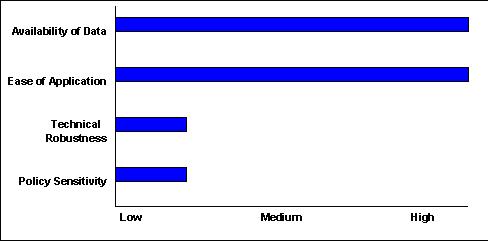
This methodology has been applied in Portneuf Valley, Bannock County, Idaho. It was suspected that the higher proportion of SUVs would be found in this county than the national default. A local vehicle count was conducted in the area, which verified that the national defaults were in the appropriate range for this category.
Resources:
Bannock Planning Organization, "FY2004 Draft Transportation Improvement Program Conformity Determination," August 15, 2003.
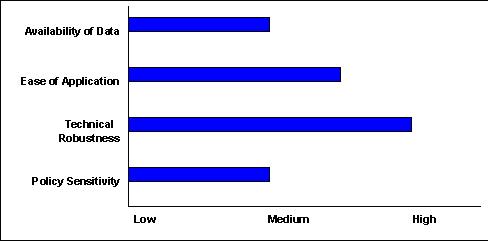
This approach involves using local vehicle registration data. This is typically available at the county level, but may be possible to acquire at city or smaller scale from the state motor vehicle registrar office. The fleet mix should be representative of the vehicle mix over the small urban or rural area under question. If the pollutants of concern are ozone precursors then the data should reflect the July 1st date. For CO, the January 1st date should be used.
Also, an assessment should be made as to the projected trends in sales growth and scrappage trends to determine if the default trends used in MOBILE6 are appropriate when using this local vehicle registration data for baseline fleet composition. The extent to which the growth and scrappage trends diverge from the baseline is an important factor that will affect estimates of future year emission estimates.
This methodology has been applied in a number of counties in Pennsylvania. The distributions were developed for July 1st and reflect the development of the fleet mix for the group of 16 composite MOBILE6 vehicle types. However, Pennsylvania elected not to use the heavy-duty vehicles registration data as they were limited and because much of Pennsylvania's HHDDV traffic is through traffic. Pennsylvania used the MOBILE6 defaults for HHDDV. This approach was also used in Missoula County, Montana with the same mix in future years.
References:
"The 2002 Pennsylvania Statewide Inventory, Using MOBILE6, An Explanation of Methodology," Michael Baker, Jr., Inc., November 2003.
This approach involves using county traffic count data by vehicle class. This requires data collection on a representative set of facilities over the small urban or rural area under question. The data collection requires measuring as many of the 28 MOBILE6 vehicle classes as possible. At a minimum the counts should be able to separate out LDGV, LDGT, and HDDV. If the pollutants of concern are ozone precursors then the data should reflect the July 1st date. For CO, the January 1st date should be used.
Also, an assessment should be made as to the projected trends in sales growth and scrappage to determine if the default trends used in MOBILE6 are appropriate when using this county traffic data for baseline fleet composition. The extent to which the growth and scrappage trends diverge from the baseline is an important factor that will affect estimates of future year emission estimates.
This methodology was used in Bannock County, Idaho to verify the percentage of LDGT1 and LDGT2 trucks had been properly developed for their region. The results showed that the national defaults were very similar to the local fleet fractions for LDGT1 and LDGT2 vehicles.
References:
Bannock Planning Organization, "FY2004 Draft Transportation Improvement Program Conformity Determination," August 15, 2003.
This approach involves using traffic count data by vehicle class in combination with vehicle registration data. This requires data collection on a representative set of facilities over the small urban or rural area under question and ideally the local vehicle registration. The traffic data collection count requires collecting information on vehicle type by roadway functional class. The vehicle registration data are then used to determine the type of fuel use by vehicle type. The vehicle registration data are typically available at the county level, but may be possible to acquire at city or smaller scale from the state motor vehicle registration office. The product of the registration data and traffic count are used to determine the MOBILE6 fleet mix over the small urban or rural area under question. If the pollutants of concern are ozone precursors then the data should reflect the July 1st date. For CO, the January 1st date should be used.
Also, an assessment should be made as to the projected trends in sales growth and scrappage to determine if the default trends used in MOBILE6 are appropriate when using this baseline fleet composition. The extent to which the growth and scrappage trends diverge from the baseline is an important factor that will affect estimates of future year emission estimates.
This methodology was used in Cheshire County, New Hampshire. VMT mix was estimated by using a combination of vehicle registration data and traffic count data were collected by roadway function class. County registration data was used to estimate fuel use (gasoline, diesel) by vehicle type and the cross product used to estimate the sixteen MOBILE6 vehicle mix categories. Development of a local fleet mix was identified as an important factor in helping the region meet conformity.
References:
New Hampshire Department of Transportation, "Procedure to Determine VMT Percentages by Vehicle Type in New Hampshire", August 2, 2002.
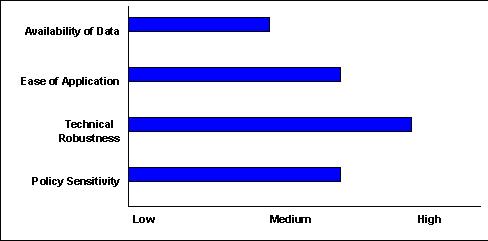
This approach involves using local traffic count data by vehicle class. This requires data collection on a representative set of facilities over the small urban or rural area under question. The data collection requires using historical HPMS data for the six or more vehicle classification counts and then translating to the 16 MOBILE6 composite vehicle classes. These vehicle classification counts from HPMS are used in conjunction with the default MOBILE6 vehicle mix by iteratively adjusting the distributions so that the final fleet mix reflect the change in vehicle mix for each year. At a minimum the vehicle classification counts should be able to separate out LDGV, LDGT and HDDV. If the pollutants of concern are ozone precursors then the data should reflect the July 1st date. For CO, the January 1st date should be used.
Also, an assessment should be made as to the projected trends in sales growth and scrappage trends to determine if the default trends used in MOBILE6 for future years are appropriate when using this local traffic data for baseline fleet composition.
This methodology was used across North Carolina for six urban and six rural road types. It was used primarily for adjusting the vehicle classification mix to reflect the change in fleet mix for higher light-duty truck fraction than the national average using recent historical HPMS data.
Reference:
Phone conversation with Behshad Norowzi, North Carolina DOT, bnorowzi@dot.state.nc.us), February 17, 2004.
The vehicle age distribution determines the fraction of vehicles operating within each emissions control requirement standard and the deterioration of the emission control technology. Emission rates vary widely between new and older vehicles. Thus, even small changes in fleet age, particularly for older vehicles, may result in large changes in emission totals.
The MOBILE6 model requires estimates of a distribution of registered vehicles by age and vehicle category for current and future years. MOBILE6 default values were developed using national level vehicle registration data by age and class for July 1, 1996. EPA developed a methodology to convert the July 1, 1996 registration profile into a general registration distribution by age and by vehicle category for some 6 composite (gasoline and diesel) vehicle types plus motorcycles (see Table below). To project future changes, EPA evaluated general sales growth and vehicle scrappage trends for the total light-duty vehicle in-use fleet and the total heavy-duty vehicle in-use fleet, and made minor adjustments, where possible, to reflect some of the differences between vehicle categories.
MOBILE6 U.S. Vehicle Fleet Distribution of Registration Fractions by age as of July 1
| Vehicle age | LDV ALL | LDT 0 -6,000 | LDT 6,001-8,500 | HDV 2B-3 8,501-14,000 | HDV 4-8B 14,001+ | HD School Bus (All) | HD Transit. Bus (All) | MC |
|---|---|---|---|---|---|---|---|---|
| 1* | 0.0530 | 0.0581 | 0.0594 | 0.0503 | 0.0364 | 0.0368 | 0.0307 | 0.1440 |
| 2 | 0.0706 | 0.0774 | 0.0738 | 0.0916 | 0.0728 | 0.0736 | 0.0614 | 0.1680 |
| 3 | 0.0706 | 0.0769 | 0.0688 | 0.0833 | 0.0681 | 0.0688 | 0.0614 | 0.1350 |
| 4 | 0.0705 | 0.0760 | 0.0640 | 0.0758 | 0.0637 | 0.0642 | 0.0614 | 0.1090 |
| 5 | 0.0703 | 0.0745 | 0.0597 | 0.0690 | 0.0596 | 0.0600 | 0.0614 | 0.0880 |
| 6 | 0.0698 | 0.0723 | 0.0556 | 0.0627 | 0.0557 | 0.0561 | 0.0614 | 0.0700 |
| 7 | 0.0689 | 0.0693 | 0.0518 | 0.0571 | 0.0521 | 0.0524 | 0.0614 | 0.0560 |
| 8 | 0.0676 | 0.0656 | 0.0482 | 0.0519 | 0.0487 | 0.0489 | 0.0614 | 0.0450 |
| 9 | 0.0655 | 0.0610 | 0.0449 | 0.0472 | 0.0456 | 0.0457 | 0.0614 | 0.0360 |
| 10 | 0.0627 | 0.0557 | 0.0419 | 0.0430 | 0.0426 | 0.0427 | 0.0613 | 0.0290 |
| 11 | 0.0588 | 0.0498 | 0.0390 | 0.0391 | 0.0399 | 0.0399 | 0.0611 | 0.0230 |
| 12 | 0.0539 | 0.0436 | 0.0363 | 0.0356 | 0.0373 | 0.0373 | 0.0607 | 0.0970 |
| 13 | 0.0458 | 0.0372 | 0.0338 | 0.0324 | 0.0349 | 0.0348 | 0.0595 | 0.0000 |
| 14 | 0.0363 | 0.0309 | 0.0315 | 0.0294 | 0.0326 | 0.0325 | 0.0568 | 0.0000 |
| 15 | 0.0288 | 0.0249 | 0.0294 | 0.0268 | 0.0305 | 0.0304 | 0.0511 | 0.0000 |
| 16 | 0.0228 | 0.0195 | 0.0274 | 0.0244 | 0.0285 | 0.0284 | 0.0406 | 0.0000 |
| 17 | 0.0181 | 0.0147 | 0.0255 | 0.0222 | 0.0267 | 0.0265 | 0.0254 | 0.0000 |
| 18 | 0.0144 | 0.0107 | 0.0237 | 0.0202 | 0.0250 | 0.0248 | 0.0121 | 0.0000 |
| 19 | 0.0114 | 0.0085 | 0.0221 | 0.0184 | 0.0234 | 0.0231 | 0.0099 | 0.0000 |
| 20 | 0.0090 | 0.0081 | 0.0206 | 0.0167 | 0.0219 | 0.0216 | 0.0081 | 0.0000 |
| 21 | 0.0072 | 0.0078 | 0.0192 | 0.0152 | 0.0204 | 0.0202 | 0.0066 | 0.0000 |
| 22 | 0.0057 | 0.0075 | 0.0179 | 0.0138 | 0.0191 | 0.0189 | 0.0054 | 0.0000 |
| 23 | 0.0045 | 0.0072 | 0.0167 | 0.0126 | 0.0179 | 0.0176 | 0.0044 | 0.0000 |
| 24 | 0.0036 | 0.0069 | 0.0155 | 0.0114 | 0.0167 | 0.0165 | 0.0037 | 0.0000 |
| 25 | 0.0103 | 0.0360 | 0.0732 | 0.0499 | 0.0799 | 0.0783 | 0.0115 | 0.0000 |
Note: age 1 = 75% of age 1 as predicted by the curve fit analysis to reflect a July 1 population of age 1 vehicle.
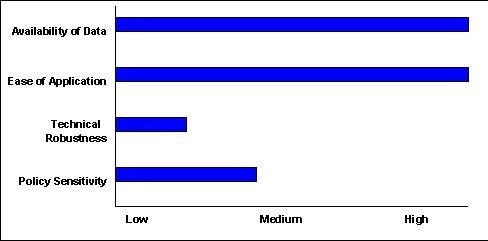
This approach involves using the national default registration distribution that comes with the MOBILE6 model. A review of the national registration data should be made in order to verify the appropriateness of the national default data. This review could look at the most important classes of vehicles: light-duty gas vehicles and heavy-duty diesel vehicles.
Also, an assessment should be made as to the projected trends in sales growth and scrappage trends to determine if the default trends used in MOBILE6 are appropriate. The extent to which the growth and scrappage trends diverge from the national default in the future is an important factor that will affect estimates of future emissions.
This methodology has been applied in Portneuf Valley, Bannock County, Idaho. However, efforts were underway to obtain a VIN decoder that would enable them to use a county specific fleet age distribution because of concerns about using the national default values for this small urban area of Pocatello and Chubbuck.
References:
Bannock Planning Organization, "FY2004 Draft Transportation Improvement Program Conformity Determination," August 15, 2003.
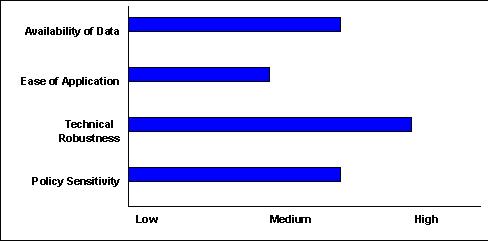
This approach involves using local vehicle registration data. This is typically available at the county level, but may also be applied using statewide data from the state motor vehicle registration office. The fleet age should be representative of the vehicle fleet over the small urban or rural area under question. If the pollutants of concern are ozone precursors, then the data should reflect the July 1st date. For CO, the January 1st date should be used.
Also, an assessment should be made as to the projected trends in sales growth and scrappage trends to determine if the default trends used in MOBILE6 are appropriate when using this local vehicle registration data for baseline age distribution. The extent to which the growth and scrappage trends diverge from the baseline is an important factor that will affect estimates of future year emission estimates.
The basic methodology has been applied in several locations, including Cheshire County, NH and in Missoula County, MT.
In Berks County in Pennsylvania, the Pennsylvania Department of Transportation used the same approach, except for heavy-duty vehicles, where the distribution was estimated using the internal MOBILE6 age distributions, since much of Pennsylvania's heavy-duty vehicle traffic is through traffic and therefore not registered in the state.
The Bay Lake Regional Planning Commission in Wisconsin used the same approaches but distributions were only made at the highest level for the three major vehicle classes of LDGT, LDGT and HDDV. Also, data were only applied using state registration distributions.
For small urban and rural areas in North Carolina, the North Carolina Department of Transportation developed age distributions based on registration data for the eight vehicle types for those portions of the state outside the state's three major urban areas.
References:
Bay-Lake Regional Planning Commission, "Assessment of Conformity of the Year 2025 Sheboygan Area Transportation Plan and the 2004-2007 Sheboygan Metropolitan Planning Area Transportation Improvement Program with Respect to the State of Wisconsin Air Quality Implementation Plan," 2003.
New Hampshire Department of Transportation, "Procedure to Determine VMT Percentages by Vehicle Type in New Hampshire", August 2, 2002.
Montana Department of Environmental Quality, Vehicle Fractions by Functional Roadway Classifications, February 25, 2004.
Pennsylvania Department of Environmental Protection, "The 2002 Pennsylvania Statewide Inventory Using MOBILE6, An Explanation of Methodology," Prepared by Michael Baker, Jr., Inc. November 2003.
In the MOBILE6 model, there are four sets of driving cycles that are modeled separately, representing different types of functional classes of roadways:
The fraction of vehicle miles traveled (VMT) by highway functional system (also called "roadway type" or "facility type") varies from area to area and can have a significant effect on overall emissions from highway sources. For SIP-related highway vehicle emission inventory development in moderate and above non-attainment areas, EPA expects states to develop and use their own specific estimates of VMT by highway functional system. Each driving cycle may be run separately, with analysis results combined outside of the MOBILE6 model, or the user may use the ability of MOBILE6 to combine the results into a single composite emission rate.
It is important for transportation agencies to understand what the MOBILE roadway classifications represent since each driving cycle set implies different assumptions about vehicle activity and different emission estimates in MOBILE6. These classifications may not always match with definitions used by transportation agencies. In particular, most transportation agencies do not explicitly account for freeway ramp VMT separately. Since freeway ramp activity is not included in MOBILE6 in the freeway driving cycle set, freeway VMT must include a corresponding amount of freeway ramp VMT in MOBILE6 to account for acceleration and deceleration to and from freeway speeds. MOBILE6 models freeway ramp VMT based on the assumption that freeway ramps are 8% of all VMT assigned to both freeways and freeway ramps. MOBILE6 models all freeway ramps at a fixed average speed of 34.6 miles per hour. If the freeway ramp VMT is accounted for in other driving cycle sets (i.e., collector roadways), then the VMT in those roadways must be reduced by the amount of VMT assigned to the freeway and freeway ramp combination.
If the user does not choose to provide these percentages, MOBILE6 uses the following default values.
While areas should use local data to estimate the VMT on each classification, given that most areas do not collect specific estimates of VMT on freeway ramps, a default percentage of 8 percent of freeway VMT on ramps (3 percent/34 percent) is generally recommended for use by EPA. This percentage, however, is a national average, and rural areas may have a lower percentage of VMT on freeway ramps due to the limited number of interchanges and large distances between interchanges in comparison to more urban areas. As a result, it may be useful for an area to consider a local study to estimate the freeway ramp percentage. This approach is described below.
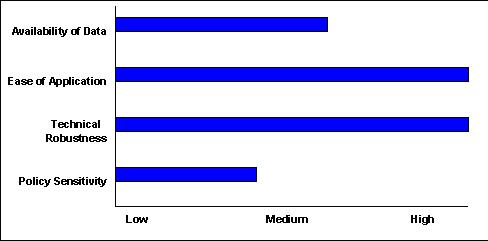
This methodology has been applied in rural areas of Kentucky. The Kentucky Transportation Cabinet (KYTC) conducted a rural ramp count survey over a 3-week period, and found that ramp VMT was roughly 1.5 percent of interstate VMT in rural areas. This estimate was significantly below the level assumed in the MOBILE6 default, and had implications on the emissions results since MOBILE6 assumes that average ramp speed is 34.6 miles per hour, which is significantly lower than the average speed on rural highways.
Reference: Phone conversation with Jesse Mayes and Barry House, Kentucky Transportation Cabinet, Jesse.Mayes@ky.gov, February 20, 2004.
Many areas have implemented inspection and maintenance (I/M) programs to reduce mobile source emissions. Many of the choices for these I/M program specifications are at the discretion of the local agency depending upon the severity of the air pollution problem and the air pollutant of concern. The types of vehicles in the program as well as the types of I/M program may have significant impacts on the estimated emission rates. For example, areas that have employed the most stringent level of I/M program (IM240) have found on-road emission reductions for CO of 45%, hydrocarbon (HC) as large as 35%, and up to 12% for NOx relative to conditions without the I/M program.[16]For the more minimal I/M programs (biennial emission idle test), reduction benefits are estimated at 19% for CO, 17% for HC, and 0.5% for NOx. Thus, the choice of program may have potentially significant changes in emission totals.
MOBILE6 is capable of modeling the impact of up to seven different exhaust and evaporative emission I/M programs on emission factors. By defining multiple I/M emission reduction programs, the user can model different requirements on different types and ages of vehicles or different requirements in different calendar years. MOBILE6 also allows users to enter a number of I/M program parameters to better model specific I/M program features. These parameters include:
In addition, the mere presence of an I/M program is expected to act as a deterrent to tampering. Thus, in areas with an I/M program, MOBILE6 will reduce the tampering rates even if there is no anti-tampering program. All 1996 and newer model year vehicles are assumed to have negligible tampering effects in MOBILE6. As a result, there is no tampering reduction benefit associated with the 1996 and newer vehicles.
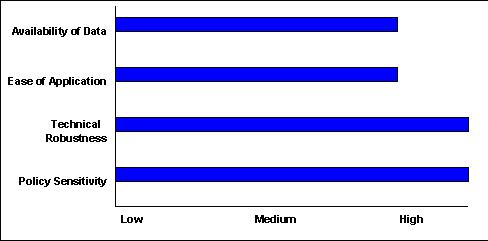
This approach involves running the local specific I/M program requirements through the MOBILE6 model to estimate the effects of the I/M program. If, through the use of local survey data, a significant fraction of the on-road fleet is found to be registered outside the jurisdiction of the local I/M program then the procedure should be modified, as described in Method #2.
In order to forecast emissions, the analysis can account for a change in the counties or local areas where I/M programs will be required in the future. The extent to which I/M program requirements change in the future is an important factor that will affect estimates of future emissions.
This methodology has been applied in both Pennsylvania's Berks County and Wisconsin's Bay Lake Regional Planning Commission.
In Berks County the I/M program began in 2003 for LDGV and LDGT vehicles only. 1996 and newer vehicles had their OBD computer checked, for 1975 to 1995 model year cars an anti-tampering program with seven inspections is performed and for all years a gas cap pressure check is done.
For Wisconsin, emission factors included different model year vapor recovery programs and more basic inspection maintenance procedures. Five vehicle classes were subject to the program: LDGV, LDGT (1 thru 4), and HDGV2B.
References:
Bay-Lake Regional Planning Commission, Wisconsin DOT, and Wisconsin Department of Natural Resources, Assessment of conformity of the Year 2025 Sheboygan Area Transportation and the 2004-2007 Sheboygan Metropolitan Planning Area Transportation Improvement Program (TIP) with Respect to the State of Wisconsin Air Quality Implementation Plan, Fall 2003.
Michael Baker, Jr., Inc., "The 2002 Pennsylvania Statewide Inventory, Using MOBILE6, An Explanation of Methodology," November 2003.
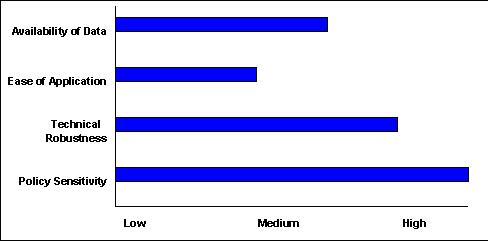
This approach involves using accident data in order to estimate the proportion of vehicles in the on-road fleet that are from jurisdictions subject to I/M program requirements. Accident data are used to determine the county in which vehicles on the road are registered. Based on place of registration, the proportion of vehicles on the road that are subject to I/M programs can be determined.
The MOBILE model is run twice-once with an I/M program and once without an I/M program. A weighted emissions factor is then calculated by multiplying the MOBILE emissions factor with I/M by the percent of vehicles from jurisdictions subject to I/M, plus the MOBILE emissions factor without I/M by the percent of vehicles from jurisdictions without I/M requirements.
To forecast emissions, the analysis can account for a change in the counties where I/M programs will be required in the future. The extent to which I/M program requirements change in the future is an important factor that will affect estimates of future emissions.
This methodology has been applied in North Carolina. This methodology was selected since an I/M program currently is limited to nine counties and there is significant county-to-county commuting. The NCDOT assumes that the I/M program in the State will be in force in 48 counties in 2007.
This methodology was used across North Carolina for six urban and six rural road types. It was used primarily for adjusting the vehicle classification mix to reflect the change in fleet mix for higher light-duty truck fraction than the national average using recent historical HPMS data.
References:
Phone conversation with Behshad Norowzi, North Carolina DOT, bnorowzi@dot.state.nc.us), February 17, 2004.
[15] USEPA, 2002. "Sensitivity Analysis of MOBILE6.0", Assessment and Standards Division, Office of Transportation and Air Quality, EPA420-R-02-035, December 2002.
[16] Evaluating Vehicle Emissions Inspection and Maintenance Programs, Committee on Vehicle Emission Inspection and Maintenance Programs, Transportation Research Board, National Research Council, National Academy of Press, 2001. ISBN 0-309-07446-0.